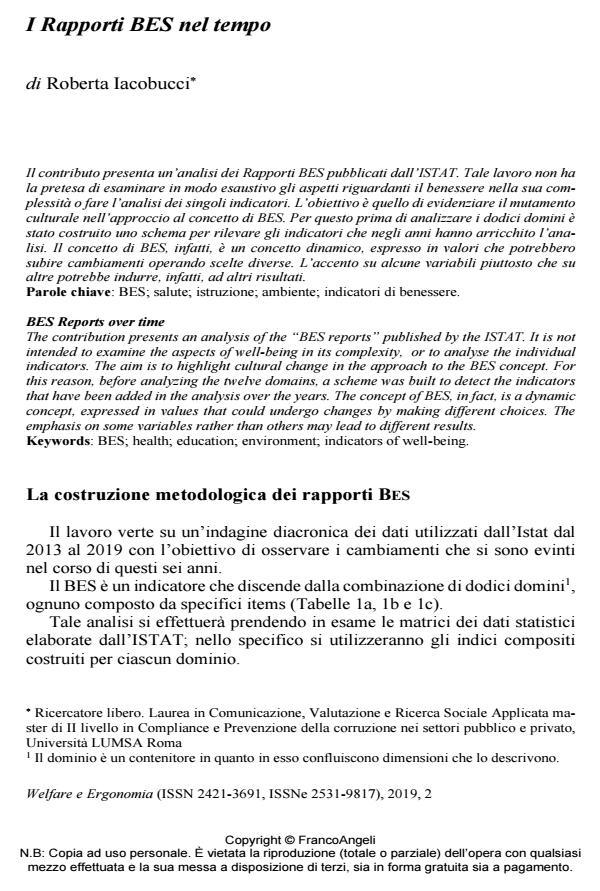BES Reports over time
Journal title WELFARE E ERGONOMIA
Author/s Roberta Iacobucci
Publishing Year 2020 Issue 2019/2
Language Italian Pages 33 P. 67-99 File size 624 KB
DOI 10.3280/WE2019-002006
DOI is like a bar code for intellectual property: to have more infomation
click here
Below, you can see the article first page
If you want to buy this article in PDF format, you can do it, following the instructions to buy download credits

FrancoAngeli is member of Publishers International Linking Association, Inc (PILA), a not-for-profit association which run the CrossRef service enabling links to and from online scholarly content.
The contribution presents an analysis of the "BES reports" published by the ISTAT. It is not intended to examine the aspects of well-being in its complexity, or to analyse the individual indicators. The aim is to highlight cultural change in the approach to the BES concept. For this reason, before analyzing the twelve domains, a scheme was built to detect the indicators that have been added in the analysis over the years. The concept of BES, in fact, is a dynamic concept, expressed in values that could undergo changes by making different choices. The emphasis on some variables rather than others may lead to different results.
Keywords: BES; health; education; environment; indicators of well-being.
Roberta Iacobucci, I Rapporti BES nel tempo in "WELFARE E ERGONOMIA" 2/2019, pp 67-99, DOI: 10.3280/WE2019-002006